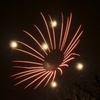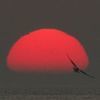Shooting HDR without bracketing
Aug 23, 2013 19:20:07 #
DoctorChas wrote:
Aha! Now that makes sense. HDR Efex Pro applies tone mapping after the initial HDR blending. I'd like to see what effective difference using a camera with a higher bit depth can achieve.
=:~)
=:~)
Just for kicks, what happens if you take that HDR image that is created and don't tone map it at all. Does the program allow you to save it as a 16 bit file? or can you save it as 32bit and then use PS to save it as 16 bit?
Does that 16 bit image then look like the raw file you started out with? I tried something similar a while back to what you are doing with PS and I couldn't make the tonemapped image significantly different from the initial raw. I guess I never liked the PS tonemapper and ended up with Photomatix.
Aug 23, 2013 19:25:48 #
DoctorChas wrote:
The math is simple.I understand exactly what HDR is. My point was to try to understand what the mathematical difference between the data in a RAW file under or overexposed by, say, 1 stop in post and a RAW file actually over or underexposed by that same value. To my mind, provided that the data in either case lies within the available dynamic of the camera, there should be no discernible difference.
Surely that's why we shoot RAW; so we can play Old Harry with the math in post?
=:~)
Surely that's why we shoot RAW; so we can play Old Harry with the math in post?
=:~)
You have a dynamic range. To extend it you need to overlap the range by overlapping it up and down then blend the image so that this overlap becomes apparent (trick of the eye by the way, no monitor or printing will ever cover the eyes dynamic range).
Raw: overlap by 1.5 to 2 step (depends of camera and format range)
Jpg: overlap by 1/2 to 2/3 step (depends of the quality you want)
In both cases shoot in pair +1 correctly exposed image
If you want a deep math formula, do your own research, I hate math.
Aug 23, 2013 19:32:19 #
UtahBob wrote:
The images are not functionally equivalent. For t... (show quote)
Point well made and taken absolutely. There's a lot of mind-boggling math that goes on in creating digital images (I nearly gave myself a hernia reading the original paper on Advanced Homogenity-Directed Interpolation) so I hope you'll forgive my fascination with what goes on under the hood, so to speak.
=:~)
Aug 23, 2013 19:38:33 #
UtahBob wrote:
Just for kicks, what happens if you take that HDR ... (show quote)
Aperture outputs the RAW files to HDR Efex Pro as 16 bit TIFFS and you can indeed apply no tone mapping if required. Personally I dislike PSI shoot a lot of HDR panoramas and trying to manage the workflow in PS would be a nightmare. I do like to get to bed occasionally :D
=:~)
Aug 23, 2013 19:49:06 #
DoctorChas wrote:
Point well made and taken absolutely. There's a lot of mind-boggling math that goes on in creating digital images (I nearly gave myself a hernia reading the original paper on Advanced Homogenity-Directed Interpolation) so I hope you'll forgive my fascination with what goes on under the hood, so to speak.
=:~)
=:~)
I like math but not enough to work up a lather any time soon. It does intrigue me as to how color can be derived from the layout of the sensor. I'm sure if you do the math, someone, including me probably will go through it but in my case don't expect any corrections. :D
Aug 23, 2013 19:49:21 #
Rongnongno wrote:
If you want a deep math formula, do your own research, I hate math.
So do I (much to the utter annoyance of my late father who was a math teacher) but there is something quite fascinating about how it all works.
For me, the serious freak-out is the realisation the the perception of colour is a complete and utter fabrication of our brains and that that perception is deeply rooted in language.
Nuts, I tell younuts! :D
=:~)
Aug 23, 2013 19:51:04 #
UtahBob wrote:
I like math but not enough to work up a lather any time soon. It does intrigue me as to how color can be derived from the layout of the sensor. I'm sure if you do the math, someone, including me probably will go through it but in my case don't expect any corrections. :D
Curiously, a man after my own heart, Bob :-D
=:~)
Aug 23, 2013 19:52:47 #
DoctorChas wrote:
Aperture outputs the RAW files to HDR Efex Pro as 16 bit TIFFS and you can indeed apply no tone mapping if required. Personally I dislike PSI shoot a lot of HDR panoramas and trying to manage the workflow in PS would be a nightmare. I do like to get to bed occasionally :D
=:~)
=:~)
What do you stitch with? I like to merge to 32bit in Photomatix, then stitch in PTGui, then tonemap in PHotomatix, and then pp in PS and then back to PTGui if a spherical for vr purposes. I have not tried the single image as a tonemapped pano yet. Might try that soon.
Aug 23, 2013 19:56:07 #
DoctorChas wrote:
Curiously, a man after my own heart, Bob :-D
=:~)
=:~)
Yes, I commented on sensor color before seeing your post, although my post came in after yours!
Aug 23, 2013 19:58:46 #
UtahBob wrote:
What do you stitch with? I like to merge to 32bit in Photomatix, then stitch in PTGui, then tonemap in PHotomatix, and then pp in PS and then back to PTGui if a spherical for vr purposes. I have not tried the single image as a tonemapped pano yet. Might try that soon.
I use AutoPano Giga for stitching and PanoTour Pro to create interactive web versions. Oddly, I've just finished putting together a pano gallery on my camera club's website:
http://edps.org.uk/member-showcase/chas-stoddard/panoramas/index.html
I love shooting panostricky devils to do but loads of fun putting them together :D
=:~)
Aug 23, 2013 22:42:54 #
DoctorChas wrote:
I use AutoPano Giga for stitching and PanoTour Pro to create interactive web versions. Oddly, I've just finished putting together a pano gallery on my camera club's website:
http://edps.org.uk/member-showcase/chas-stoddard/panoramas/index.html
I love shooting panostricky devils to do but loads of fun putting them together :D
=:~)
http://edps.org.uk/member-showcase/chas-stoddard/panoramas/index.html
I love shooting panostricky devils to do but loads of fun putting them together :D
=:~)
Some of those are pretty sweet. One thing you might want to think about is multiple OS viewing. I first tried on an Android and the images in full rez wanted flash. Gigapan was that way until recently - I think they switched to html.
Aug 24, 2013 05:36:14 #
UtahBob wrote:
Some of those are pretty sweet. One thing you might want to think about is multiple OS viewing. I first tried on an Android and the images in full rez wanted flash. Gigapan was that way until recently - I think they switched to html.
There's a major update to PanoTour coming which should address that issue.
Thanks for looking :D
=:~)
Aug 24, 2013 05:52:27 #
Firstly Doc, you don't actually understand what so-called "HDR" is, otherwise you would never have fallen into the traps of saying what you have. Secondly, the human eye is limited to approximately 6.5 F/stops as an instantaneous "snapshot" of a scene. Thirdly, bit depth has nothing to do with the actual dynamic range to which any given sensor can usefully respond. Bit depth refers to the degree of resolution of the recorded data.
Aug 24, 2013 06:32:13 #
Aug 24, 2013 06:44:48 #
Err sorry but bit depth is directly related to dynamic range. Ignoring the CFA for a moment, a sensor can only record the amount of light falling on itthe luminance. A 12-bit sensor can record 4096 possible values; a 14-bit sensor 16,384 and a 16-bit sensor 65,536.
Put another way, 12 bits give you a 4096:1 contrast ratio and a dynamic range of 12 stops, 14 bit 16,384:1 and a DR of 14 and 16 bits 65,536:1 CR and 16 stops DR. The total dynamic range, however, is limited by noise levels and the quality of the A/D convertor and thus the practical limit is 5-9 stops. Therefore I consider looking at the raw output of the sensor and its bit depth an indicator of the available dynamic range in precisely the same way that digital audio treats it: a 16-bit recording has a dynamic range of 96dB, one at 24-bits goes up to 120dB
Once through the A/D convertor, these higher bit values allow us a greater tonal range without running into posterisation problems.
Incidentally, all the literature I've read shows that, although the eye has a total range of about 30 stops, under normal light conditions the effective range is 10-14 stops. This is due to changes in the rhodopsin cycle between dark and light conditions. Watch out, folksthere's some seriously nutty biochemistry involved so make sure to take your Vitamin A :D
=:~)
Put another way, 12 bits give you a 4096:1 contrast ratio and a dynamic range of 12 stops, 14 bit 16,384:1 and a DR of 14 and 16 bits 65,536:1 CR and 16 stops DR. The total dynamic range, however, is limited by noise levels and the quality of the A/D convertor and thus the practical limit is 5-9 stops. Therefore I consider looking at the raw output of the sensor and its bit depth an indicator of the available dynamic range in precisely the same way that digital audio treats it: a 16-bit recording has a dynamic range of 96dB, one at 24-bits goes up to 120dB
Once through the A/D convertor, these higher bit values allow us a greater tonal range without running into posterisation problems.
Incidentally, all the literature I've read shows that, although the eye has a total range of about 30 stops, under normal light conditions the effective range is 10-14 stops. This is due to changes in the rhodopsin cycle between dark and light conditions. Watch out, folksthere's some seriously nutty biochemistry involved so make sure to take your Vitamin A :D
=:~)
If you want to reply, then register here. Registration is free and your account is created instantly, so you can post right away.




